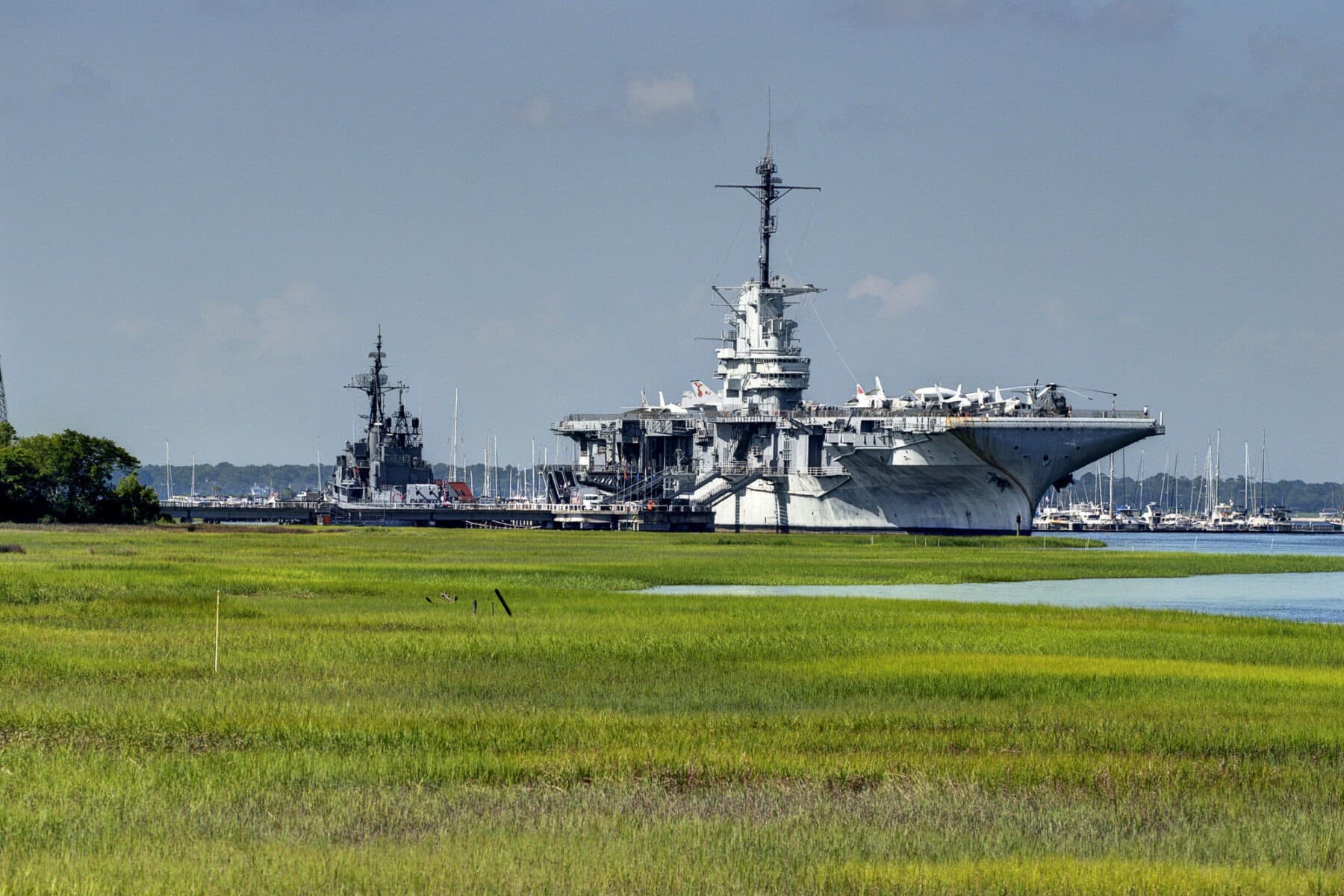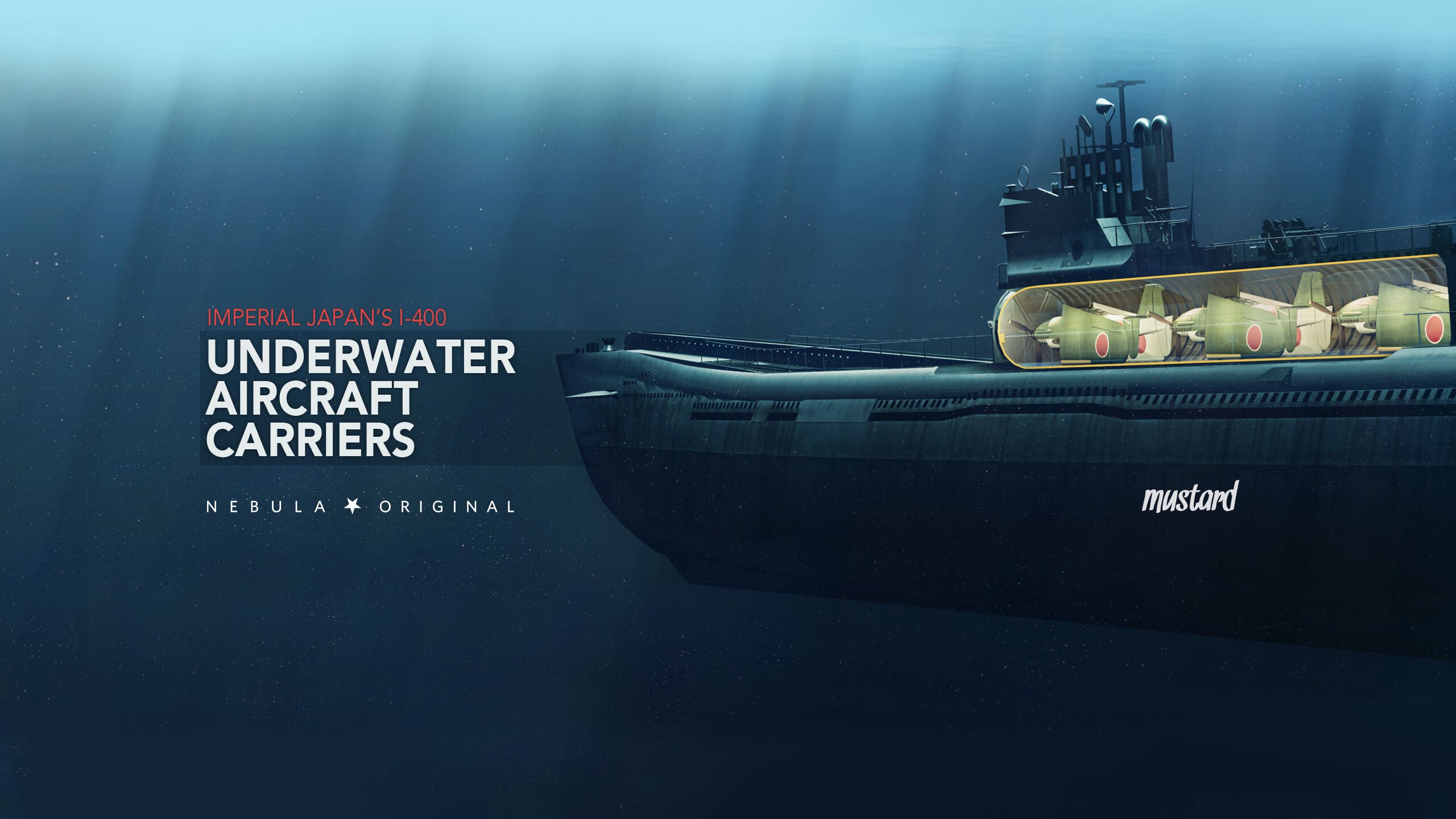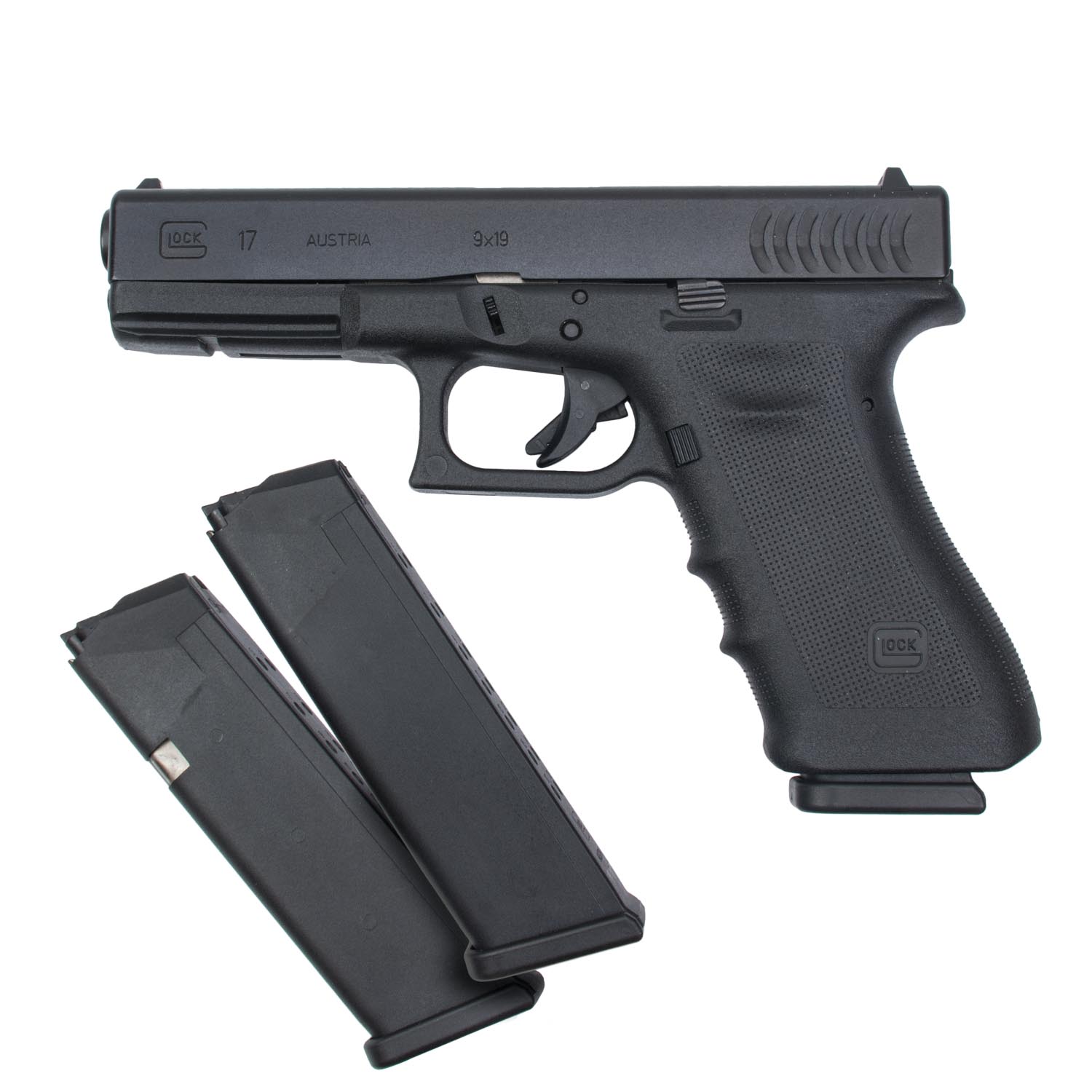Aircraft Carrier South Carolina - This article needs additional citation for verification Please help improve this article by adding citations to reliable sources Unauthorized material may be questioned and removed Find sources: "USS Yorktown" CV-10 - News · Newspaper · Books · Scholar · JSTOR (September 2021) ( Learn how and to whom to remove this template message)
32°47′26″N 79°54′31″W / 32.79056°N 79.90861°W / 32.79056; -79.90861 Coordinates: 32°47′26″N 79°54′31″W / 32.79056°N 79.90861°W / 32.79056; -79.90861
Aircraft Carrier South Carolina

USS Yorktown (CV/CVA/CVS-10) was one of 24 Essex-class aircraft carriers built for the United States Navy during World War II. Initially named Bonhomme Richard, Yorktown was attacked while under construction after the sinking of the Yorktown-class aircraft carrier USS Yorktown (CV-5) at the Battle of Midway. She is the fourth US Navy ship to bear that name, although previous ships were named after the 1781 Battle of Yorktown. Yorktown was commissioned in April 1943 and served in several campaigns in the Pacific Theater of Operations, earning 11 battle stars and the Presidential Unit Citation.
Vikrant To Take A Finite Time To Be Fully Ready For Deployment'
She was modernized shortly after the end of the war and was recommissioned as a carrier attack vehicle (CVA) in February 1953 and saw distinguished service during the Korean War. The ship was again modernized with a skewed deck to become an anti-submarine carrier (CVS) and served for many years in the Pacific, including duty in the Vietnam War, while earning five battle stars. At the end of its career, the carrier was the recovery vessel for the Apollo space missions and was used in the film Tora! Tora! Tora!, which spawned the Japanese attack on Pearl Harbor and the sci-fi film The Philadelphia Expert.
Yorktown was commissioned in 1970 and became a museum ship in 1975 at Patriots Point, Mount Pleasant, South Carolina, where it was designated a National Historic Landmark.
Work on the Bonhomme Richard began with the keel laid by the Newport News Shipbuilding & Drydock Company in Newport News, Virginia on December 1, 1941, six days before the attack on Pearl Harbor. She was renamed USS Yorktown on 26 September 1942 to commemorate the loss of USS Yorktown (CV-5) at the Battle of Midway in June 1942.
And it was launched on January 21, 1943, encouraged by Eleanor Roosevelt. Yorktown was commissioned on 15 April 1943 with Captain Joseph J. Clark in command.
Uss South Carolina (cgn 37)
Yorktown Naval Station remained in the Norfolk area until May 21, and conducted shakedown training in the Trinidad area. She returned to Norfolk on 17 June and resumed post-shakedown availability. The aircraft carrier completed repairs on 1 July and resumed operations from Norfolk until 6 July, when she left the Chesapeake Bay en route to the Pacific Ocean. She crossed the Panama Canal on July 11 and left Balbaya, Panama on July 12. The battleship arrived at Pearl Harbor on 24 July and began a month of exercises in the Hawaiian Islands. On 22 August, she docked near Pearl Harbor for the first battle of the war. Her task force, TF 15, arrived at the launch point 206 km (about 128 miles) from Marcus Island on the morning of 31 August. He spent most of that day engaged in fighter and bombardment at Marcus Island before withdrawing to Hawaii. The carrier returned to Pearl Harbor on September 7 and remained there for two days
On September 9, she set sail for the west coast of the United States, arriving in San Francisco on September 13, loading aircraft and supplies, and returning to sea on September 15. Four days later the aircraft carrier returned to Pearl Harbor. On 29 September, Yorktown returned to sea for combat operations.On the morning of 5 October, she began two days of air strikes on Japanese installations on Wake Island. After withdrawing to the east during the night, he resumed these air attacks on the morning of October 6 and continued them throughout the day. That evening, the task force began withdrawing to Hawaii. Yorktown arrived on Oahu on 11 October and conducted air training operations from Pearl Harbor for the next month.
On 10 November, Yorktown departed Pearl Harbor to participate in the occupation of the Gilbert Islands with Task Force 38 - Fast Carrier Task Force, Pacific Fleet. On 19 November, she reached launch points near Jaluit and Miley Atoll, and that morning made her first attack to suppress Amy air power in the attacks on Tarawa, Abema, and Makin. The next day he attacked the Jaluit airport; Some of his aircraft also supported Makin's troops in removing the Japanese.On 22 November, his air group engaged facilities and aircraft at Milan again before returning to Pearl Harbor, the aircraft carrier overtaking facilities at Wotje and Kwajalein atolls on 4 December. The battleship returned to Pearl Harbor on 9 December and began a month of aerial training in the Hawaiian Islands.

On January 16, 1944, the battleship once again departed Pearl Harbor for an amphibious assault - Operation Flintock, the invasion of the Marshall Islands. Attached to Fast Carrier Task Force Five Fleet and redesignated TF 58, Yorktown was designated Task Group 58.1 (TG 58.1). Wh TG 58.1 arrived at the launch point on the morning of 29 January, the carriers Yorktown, Lexington and Coups began air raids at approximately 05:20 to attack Taro Airfield on Malolaup Atoll. Throughout the day, his planes flew to Maluro in preparation for the January 31 attack on Majuro and Kwajalein. On 30 January, Yorktown and her sister carriers changed their targets to Kwajale and began polishing one of the targets. On January 31, when the troops went ashore, the Yorktown aviators continued their attack on Kwajalein in support of the troops attacking that atoll. A similar rendezvous was held by the Yorktown Air Group during the first three days of February on 4 February, however, the task force withdrew to a properly secured delivery at Majuro Atoll.
North Charleston Patriots Point Naval And Maritime Museum Aircraft Carrier Yorktown (2)
Over the next four months, Yorktown participated in several raids from the Marianas in the north to New Guinea in the south. After eight days at Majuro, she and her task force launched an air raid on the main Japanese anchorage at Truk Atoll on 12 February. The highly successful raid took place on February 16-17.On February 18, the carrier set course for the Marianas, and on February 22, Amy conducted a full day of raids on Saipan airfields and facilities. That day he cleared the area on his way back to Majuro. The warship arrived in Lake Majuro on 26 February and anchored there on 8 March, the carrier stopped off Majuro, joined the rest of TF 58 and set course for Espiritu Santo in the New Hebrides. It reached its destination on 13 March, where it remained for 10 days before launching further attacks against the Japanese defensive line. On March 30-31, he began airstrikes on Japanese installations in the Palau Islands; and on April 1, after his aviator Wolai Island Five days later, he returned to Majuro for a week of recuperation and recreation
On 13 April, Yorktown returned to sea again, this time setting course for the northern coast of New Guinea. On April 21, he attacked in support of Gerald Douglas MacArthur's attack on Hollandia (now known as Jaipura). That day his planes attacked facilities in the Wakde-Sarmee region of northern New Guinea. On April 22-23, they themselves went to the landing zones in the Netherlands and began providing direct support to the invading forces. After this attack, he withdrew from the coast of New Guinea and made another attack on Truk Lagoon, which his aircraft carried out on 29 and 30 April. The aircraft carrier returned to Majuro on May 4; However, she departed again two days later, bound for Oahu. The battleship docked at Pearl Harbor on 11 May and spent the next 18 days conducting training operations in the Hawaiian Islands. Returning to the Central Pacific on 29 May, Yorktown anchored again in Lake Mazuro on 3 June and began preparations for her next major amphibious support operation: the invasion of the Marianas.
On 6 June, the aircraft carrier docked off Majuro with TF 58 and set course for the Mariana Islands. After five days of steaming, it reached the launch point and began an initial target polishing flight in preparation for the attack on Saipan. Yorktown aircraft were built primarily at airfields located on Guam. These raids continued until 13 June, when Yorktown, along with two task forces from TF 58, moved north to hit targets in the Bonin Islands. The result of this movement is the result of a day
Aircraft carrier museum in south carolina, what aircraft carrier is in charleston south carolina, carolina aircraft, south carolina aircraft carrier, south korea aircraft carrier, south african aircraft carrier, aircraft carrier charleston south carolina, aircraft carrier museum charleston south carolina, aircraft carrier north carolina, uss north carolina aircraft carrier, aircraft carrier museum south carolina, aircraft carrier in charleston south carolina














.jpg?resizeid=2&resizeh=1000&resizew=1000)


